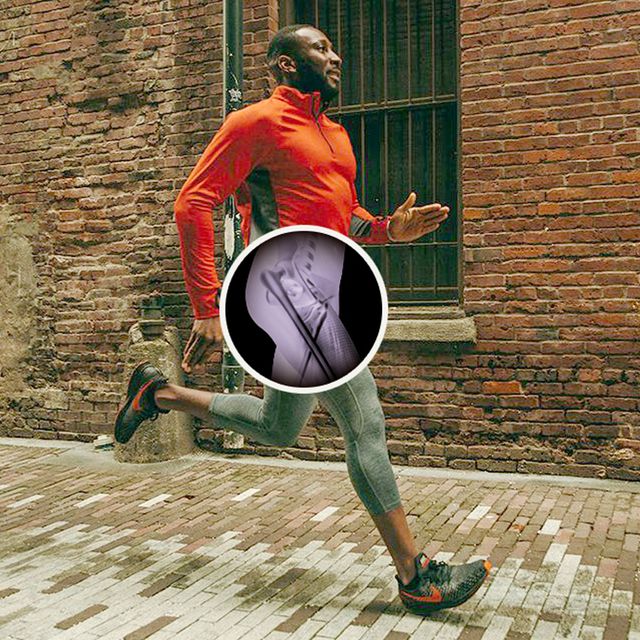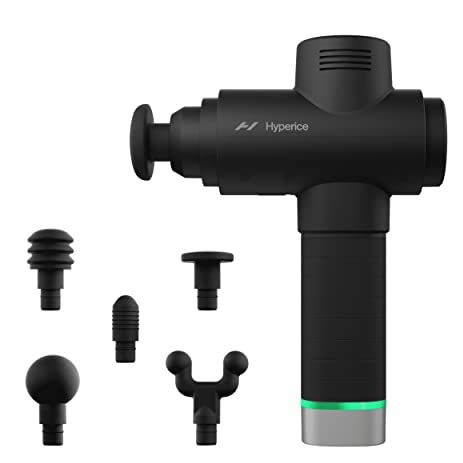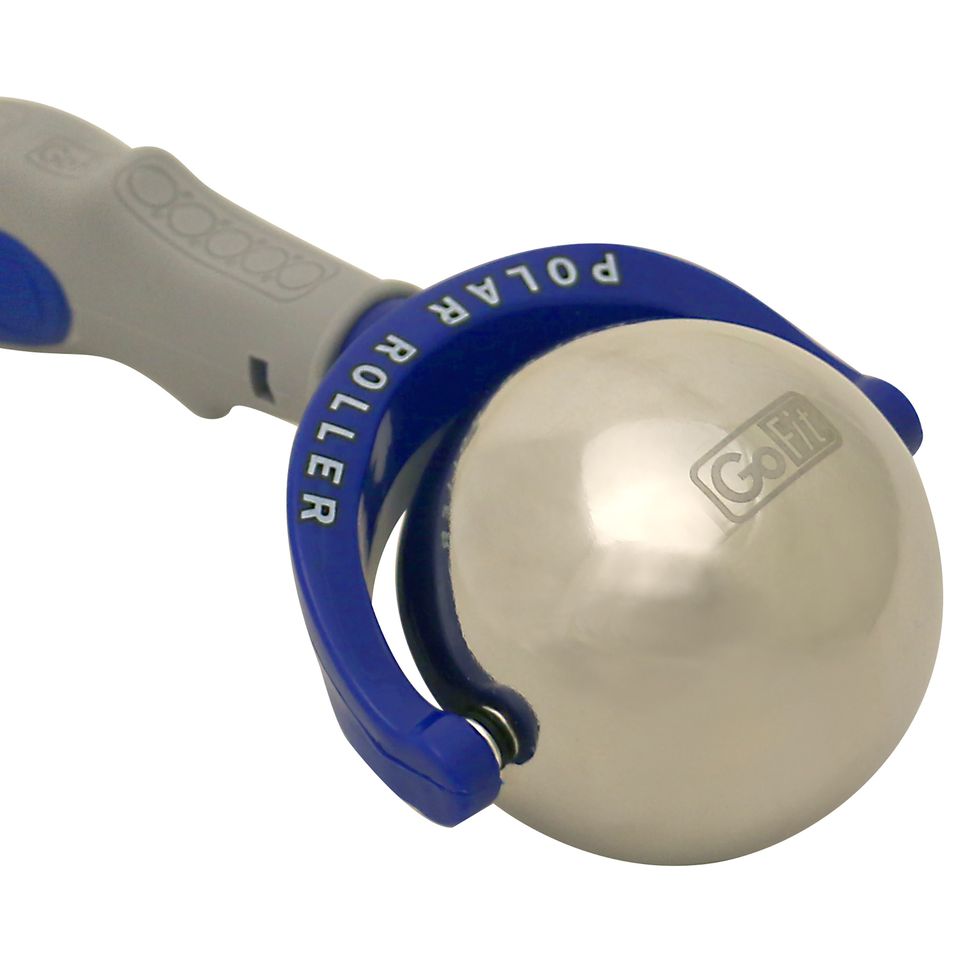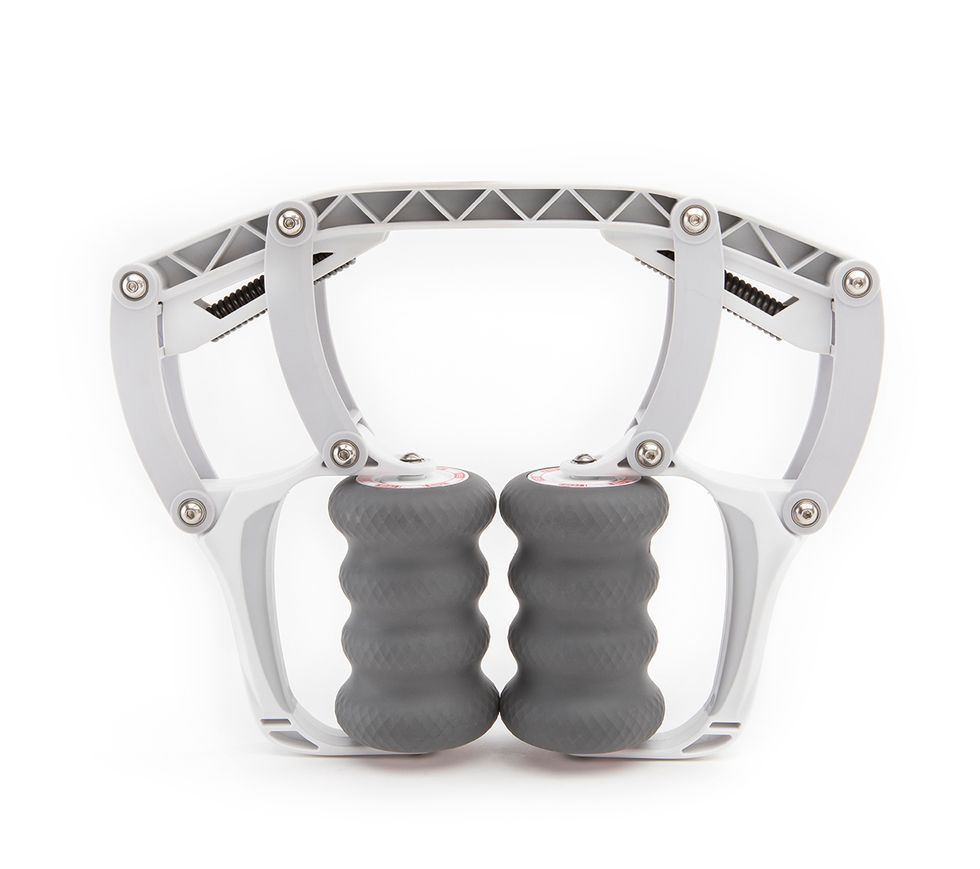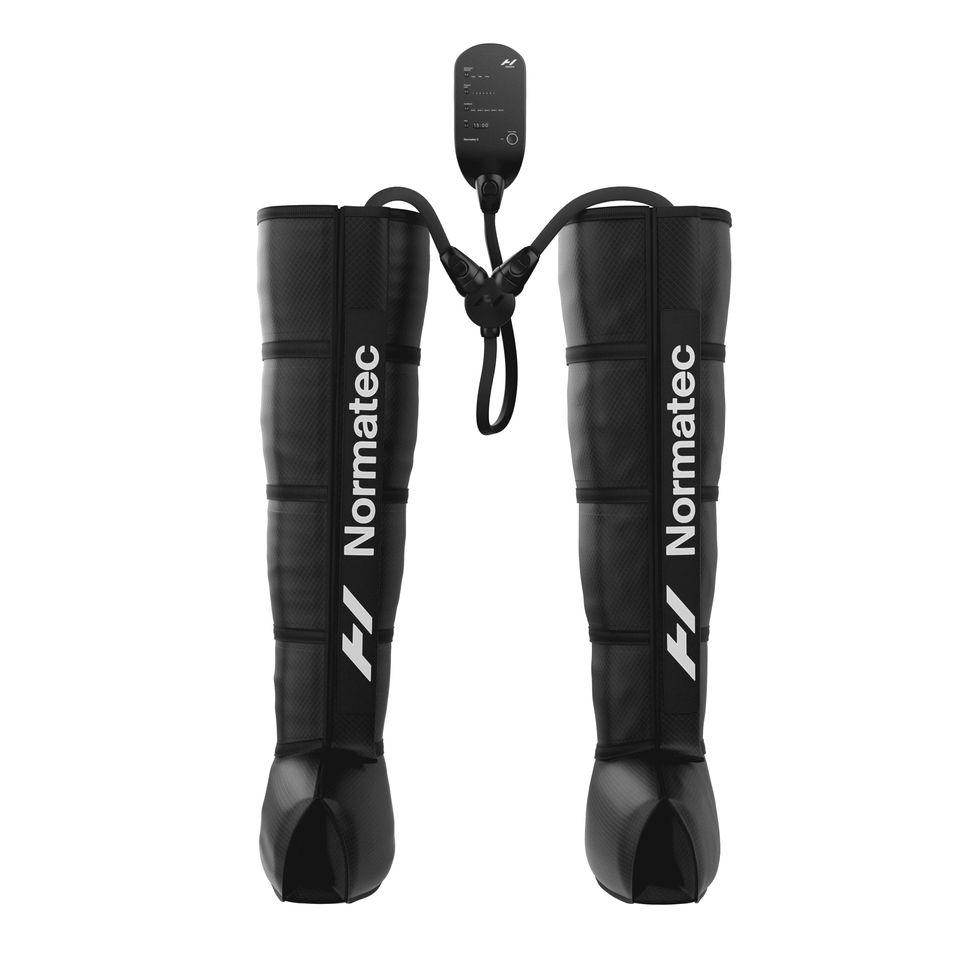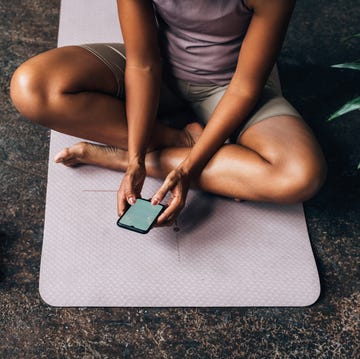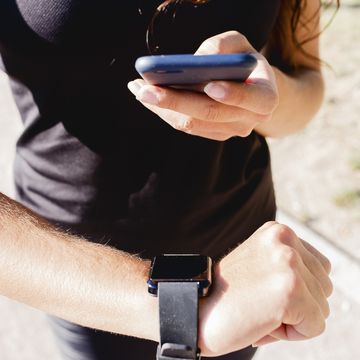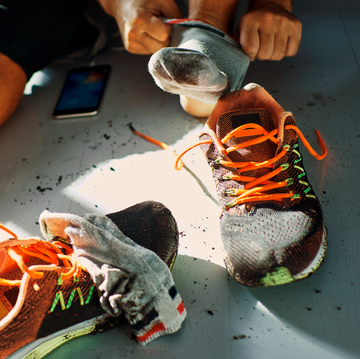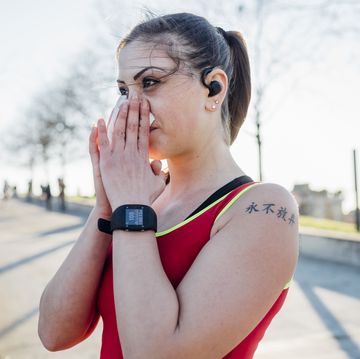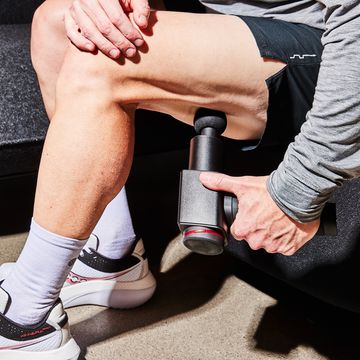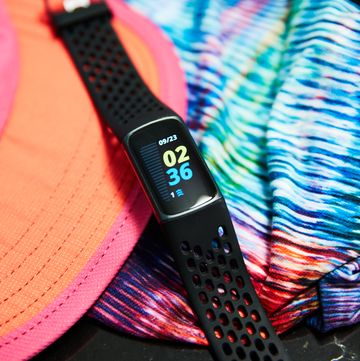If you’ve ever suffered a bone-related injury like a stress fracture, you know how hard it can be to be sidelined and focused on rehab. And you’re not alone: Research suggests runners have up to a 50-percent chance of injury every year.
But don’t let that statistic scare you off from logging miles on a regular basis, whether you’re just getting started or looking to ramp things up. Getting enough calcium and vitamin D and not upping your mileage too fast too soon are two easy ways to lessen your chances of winding up with a bone-related injury in the first place.
Another more advanced tool you can add to your injury-prevention arsenal? It’s called a DEXA scan.
What Is a DEXA Scan?
Simply put, a DEXA scan—short for dual energy X-ray absorptiometry—is commonly used to test bone density, measuring bone loss through imaging. In addition to this information, however, athletes may find other data that can be collected during a DEXA scan relevant, including body composition measurements.
“We can tell body fat percentage and distribution in the body, bone density for [your] body as a whole or [just] a hip/spine measure, pinpoint areas of muscle imbalance that might put a person at risk of injury, and track injuries that are being rehabilitated,” Sami Kauffman, M.A., R.D., C.D., a sports dietitian with Parkview Sports Medicine, tells Runner’s World. “The DEXA will also calculate a resting metabolic rate for the individual, allowing us to have a quick starting point to calculate caloric needs without running additional calculations.”
While all of these measurements can be extremely useful for athletes—especially when looking to get a baseline evaluation—it is a common myth that a DEXA scan provides a full picture of our bone health. The results are, in fact, just one piece of the puzzle—something Nathan Carlson, P.T., D.P.T., owner of Runningmate PT and Performance Coaching, stresses.
“DEXA scans only tell us how much bone we have,” Carlson says. “They do not tell us the strength of our bones. It is important to know how much bone we have, but the quality of bone tissue plays a big role in its strength. They give us a broad outline of someone's bone health, but we need more information to fill in the picture.”
Getting an initial DEXA scan to see where your measurements—bone and body—are and how they compare to additional scans down the line can be beneficial, then, to stay ahead of changes in bone mass (especially as loss of bone mass can lead to a greater chance of injury).
Join Runner’s World+ to become a stronger, faster runner!
Where Can You Get a DEXA Scan?
The good news is, depending on where you choose to get a DEXA scan, you don’t need a doctor’s referral. A referral, of course, gives a greater chance that insurance will cover the cost of the diagnostic scan. However, the American Board of Internal Medicine (ABIM) lists the average cost at $125. This out-of-pocket cost will vary based on where you get the test, and according to Gbolahan Okubadejo, M.D., FAAOS, a New York City-area spinal and orthopedic surgeon, they are “commonly offered at most hospital radiology departments, private radiology groups, and some provide medical practices that offer bone density testing.”
While these locations may be your only choices in smaller cities, mobile trucks are popping up in larger cities including Los Angeles, Seattle, and Austin, offering DEXA scans geared toward health enthusiasts for as little as $45. There are also some gyms and health clubs in larger cities that offer DEXA scans.
What Happens During a DEXA Scan?
Very little is involved for the person receiving the scan—you simply lie on your back on an X-ray table, Okubadejo says. You may be instructed to wear activewear or other fitness apparel to avoid having any zippers or buckles interfere with the scan, or a gown will be provided.
“The good news is, no injection is necessary, and for those who are claustrophobic, you do not need to go into a tunnel,” Okubadejo says. “You simply lie on your back on an open X-ray table and remain still so that the X-ray pictures are clear. During the scan, a scanning arm is passed over your body to measure bone density in the center of the skeleton.”
A DEXA scan usually takes around 15 minutes, though the appointment may take longer if you are discussing results with a radiologist, sports physician, or health coach immediately after the scan.
How Accurate are DEXA Scans?
In terms of measuring both bone density and body composition, a DEXA scan is very accurate—so accurate, in fact, that Kauffman notes it is the gold-standard in non-invasive diagnostic testing.
“Calipers and bioelectrical impedance scales can provide body composition information that is less reliable and more affected by outside factors such as hydration or, [in the case of calipers], changes in provider,” Kauffman says. “These methods cannot provide bone density information.”
Who Should Consider Getting a DEXA Scan?
Carlson admits that runners don’t usually get a DEXA Scan until a problem occurs—however, they have a wide range of use. Runners who have a poor relationship with food or a history of an eating disorder, multiple or unexplained bone stress injuries or other bone-related medical conditions may find a scan especially useful.
Using a DEXA scan to get a baseline view or comparison of your body composition and bone density can help shape a training plan, for example, especially for an injured athlete. Okubadejo notes that injuries can change body composition, and baseline measurements can be most helpful during recovery. “For example, a shoulder injury may temporarily result in muscle atrophy,” explains Okubadejo. “Knowing a baseline reading can help to determine when lean mass returns to the pre-injured state and know when it’s safe to get ‘back in the game.’”
Of course, the primary purpose of a DEXA scan is to measure bone density, which also has benefits for athletes—and runners in particular. Should a runner pick up any deficits in bone health, says Carlson, this can influence their strength routine. As for body composition, a DEXA scan can also help monitor the loss of fat versus lean muscle in athletes who have weight loss goals.
“Some collegiate programs will have all their runners tested once or twice a year,” Carlson says. “This can help the medical and coaching staff assess bone and muscle health [to] help guide potential changes in training, nutrition, medications or strength regimens.”
How Often Should You Get a DEXA Scan?
If you are under the care of a doctor and there is any concern about your bone density, a DEXA scan may be ordered once per year. If you are using it to gain more insight about your body composition, as well, you can get more than one per year, though Okubadejo stresses you should get no more than four per year due to the ionizing radiation (though the amount is minimal).
“There is a very minimal exposure to X-rays, but is safe to do quarterly,” agrees Kaufmann. “A DEXA scan has a smaller error rate than some of the other readily-available body composition methods, such as bioelectrical impedance or caliper methods.”
The Bottom Line
If you’re looking for a way to measure your body composition and bone density, the DEXA scan is the most accurate way to do it. While amateur athletes don’t need regular scans, interested athletes—especially those with a history of bone-related injuries—might consider one per year without a doctor’s referral if it fits your budget as a precise way to measure progress and identify any weaknesses or inconsistencies that may call for changes to a training plan.
If you live in a larger city, your options for DEXA scans, including some sports medicine clinics, may be more plentiful than smaller cities (especially due to mobile trucks offering simultaneous health coaching popping up).

